Abstract
OBJECTIVE: The current study was undertaken to determine long-term results of aortic valve replacement (AVR) in the elderly, to ascertain predictors of poor outcome, and to assess quality of life. SUMMARY BACKGROUND DATA: Aortic valve replacement is the procedure of choice for elderly patients with aortic valve disease. The number of patients aged 70 and older requiring AVR continues to increase. However, controversy exists as to whether surgery devoted to this subset reflect a cost-effective approach to attaining a meaningful quality of life. METHODS: This study reviews data on 247 patients aged 70 to 89 years who underwent isolated AVR between 1980 and 1995; there were 126 men (51%) and 121 women (49%). Follow-up was 97% complete (239/247 patients) for a total of 974.9 patient-years. Mean age was 76.2 +/- 4.8 years. Operative mortality and actuarial survival were determined. Patient age, gender, symptoms, associated diseases, prior conditions, New York Health Association class congestive heart failure, native valve disease, prosthetic valve type, preoperative catheterization data, and early postoperative conditions were analyzed as possible predictors of outcome. Functional recovery was evaluated using the SF-36 quality assessment tool. RESULTS: Operative mortality was 6.1% (15/247). Multivariate logistic regression showed that poor left ventricular function and preoperative pacemaker insertion were independent predictors of early mortality. After surgery, infection was predictive of early mortality. Overall actuarial survival at 1, 5, and 10 years was 89.5 +/- 2% (198 patients at risk), 69.3 +/- 3.4% (89 patients at risk), and 41.2 +/- 6% (13 patients at risk), respectively. Cox proportional hazards model showed that chronic obstructive pulmonary disease and urgency of operation were independent predictors of poor long-term survival. Postoperative renal failure also was predictive of poor outcome. Using the SF-36 quality assessment tool, elderly patients who underwent AVR scored comparably to their age-matched population norms in seven of eight dimensions of overall health. The exception is mental health. CONCLUSIONS: Aortic valve replacement in the elderly can be performed with acceptable mortality. Significant preoperative risk factors for early mortality include poor left ventricular function and preoperative pacemaker insertion. Predictors of late mortality include chronic obstructive pulmonary disease and urgency of operation. These results stress the importance of operating on the elderly with aortic valve disease; both long-term survival and functional recovery are excellent.
Full text
PDF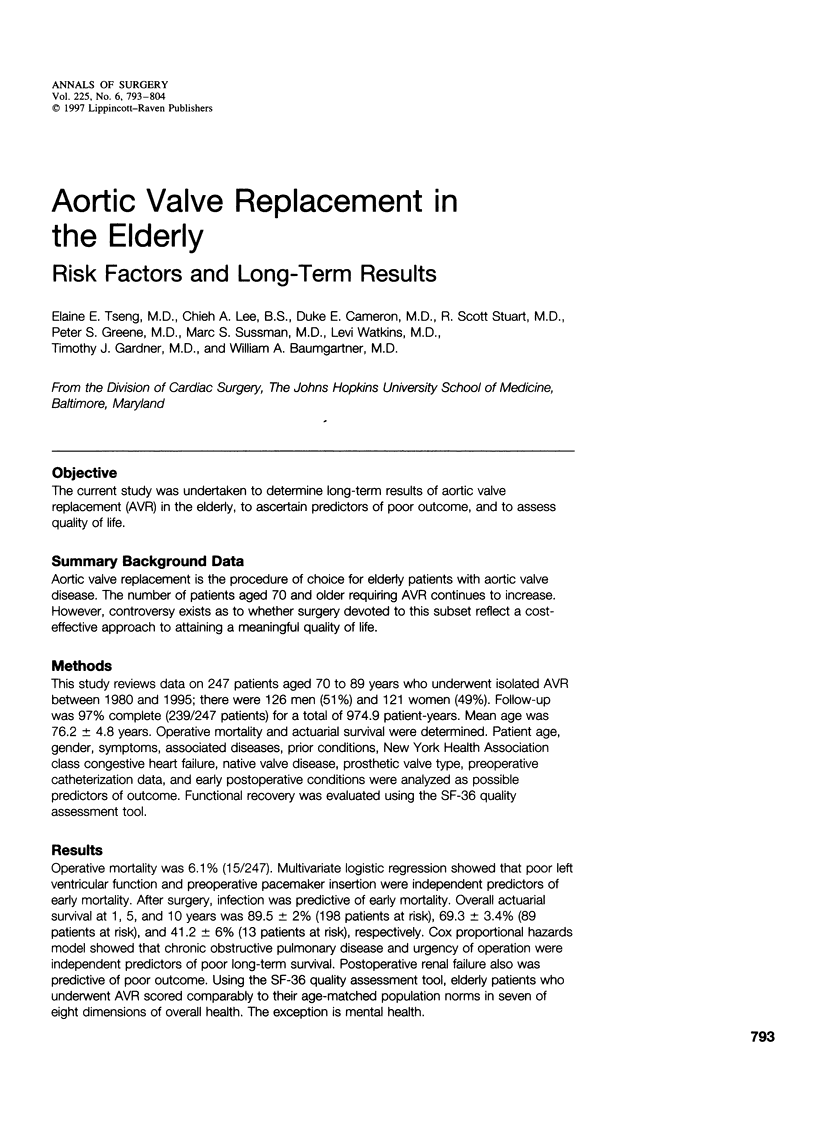
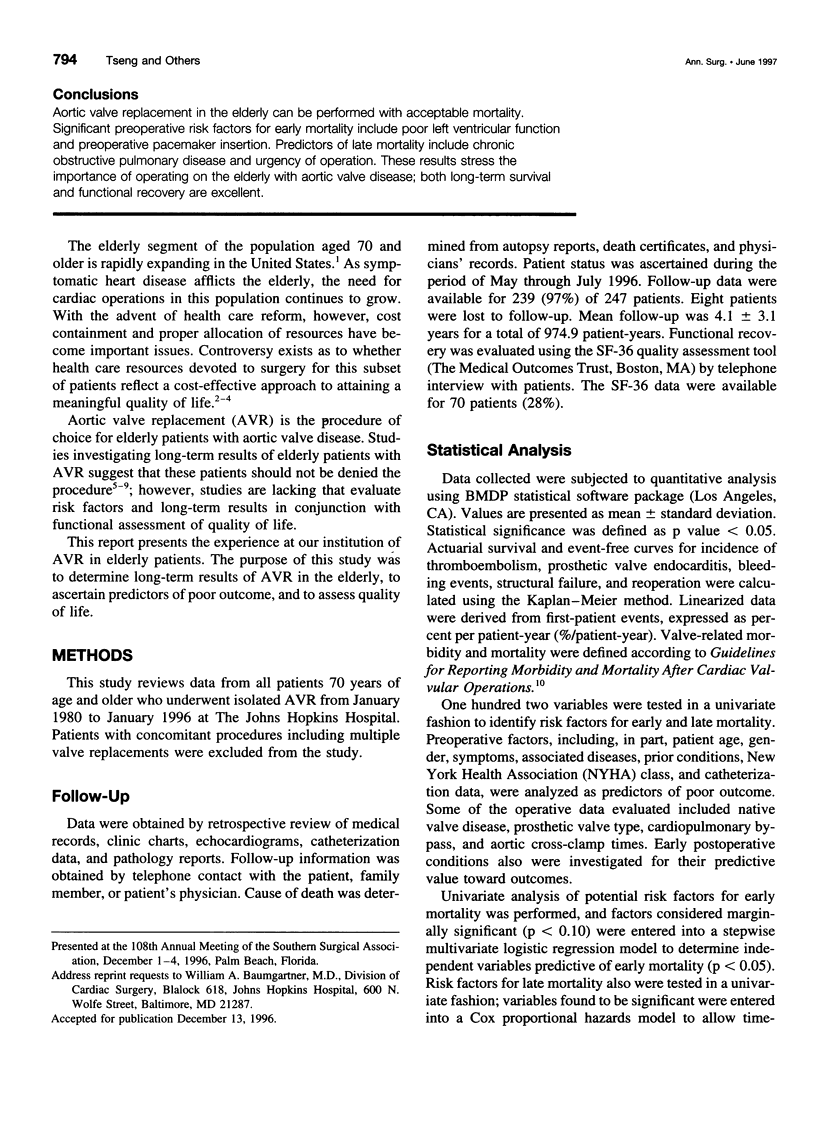
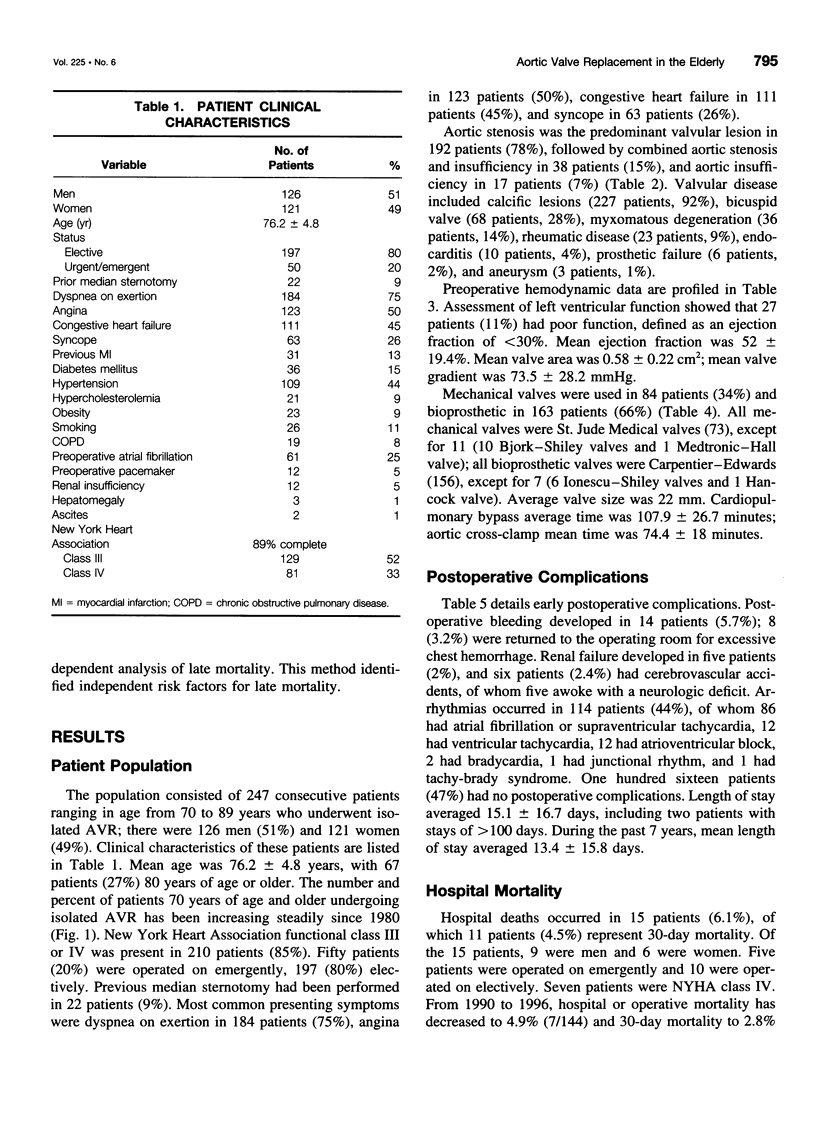
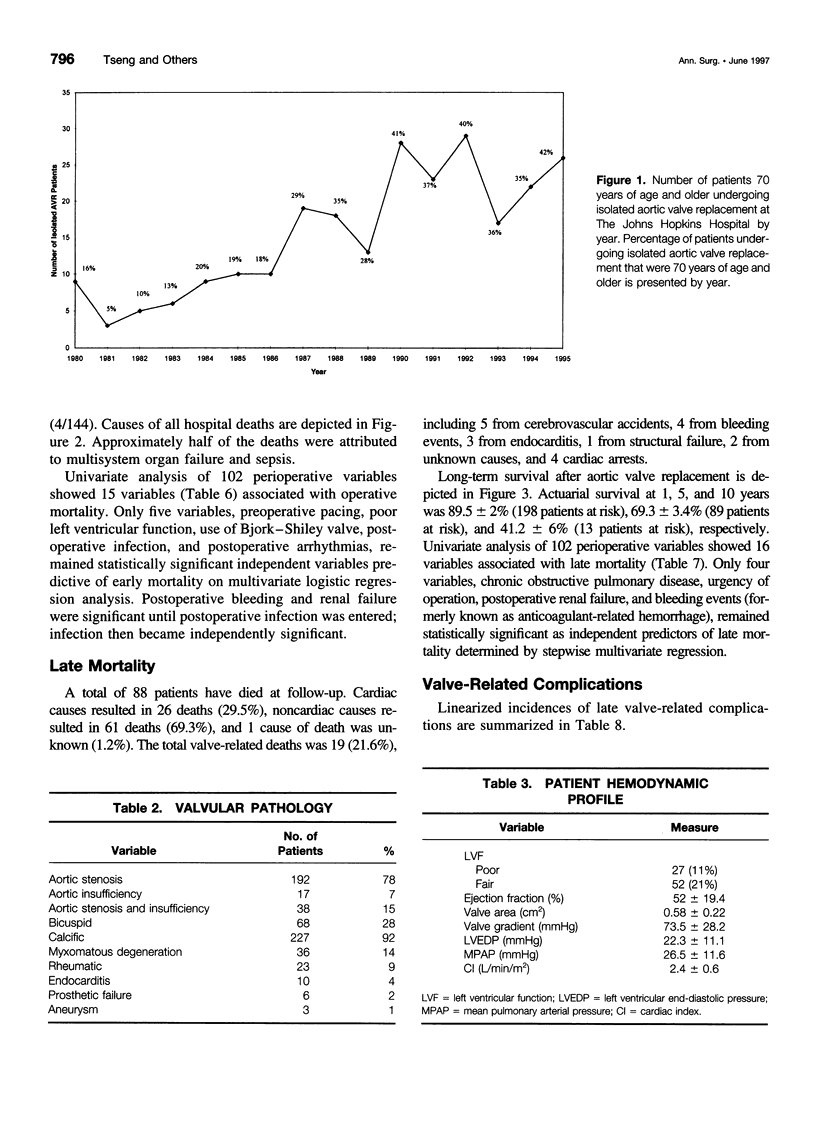
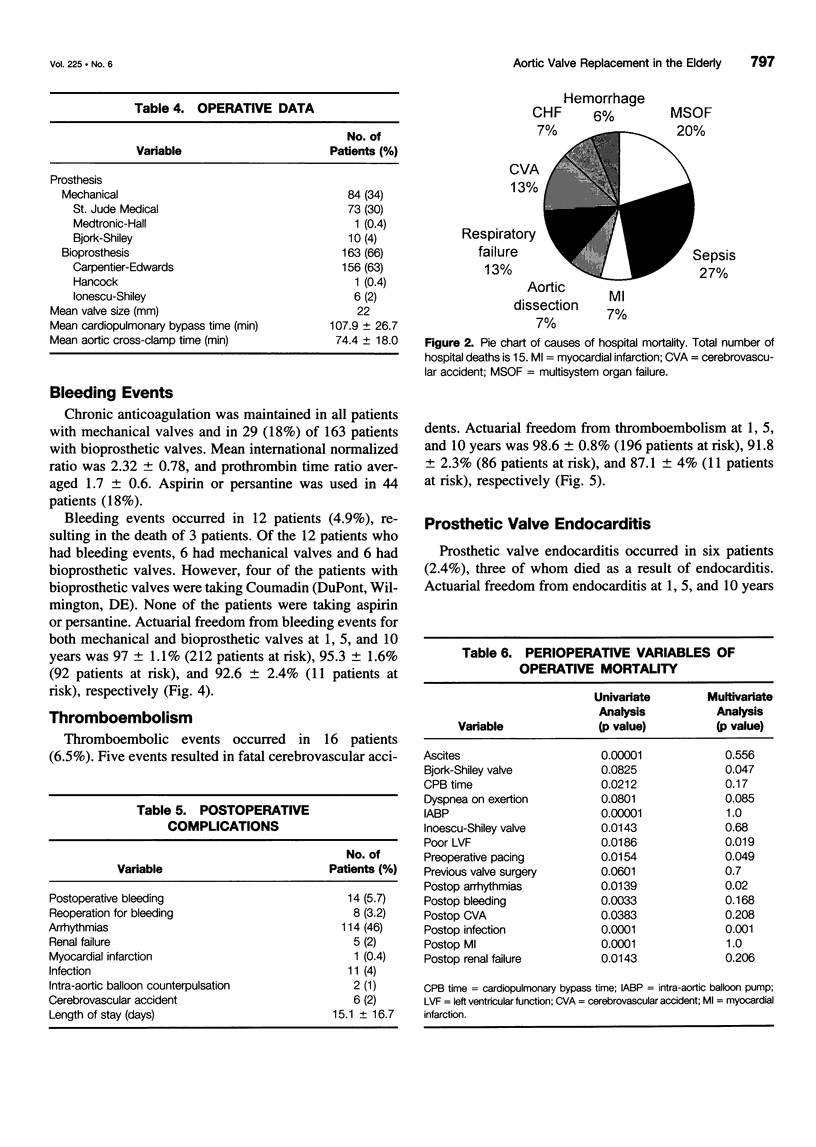
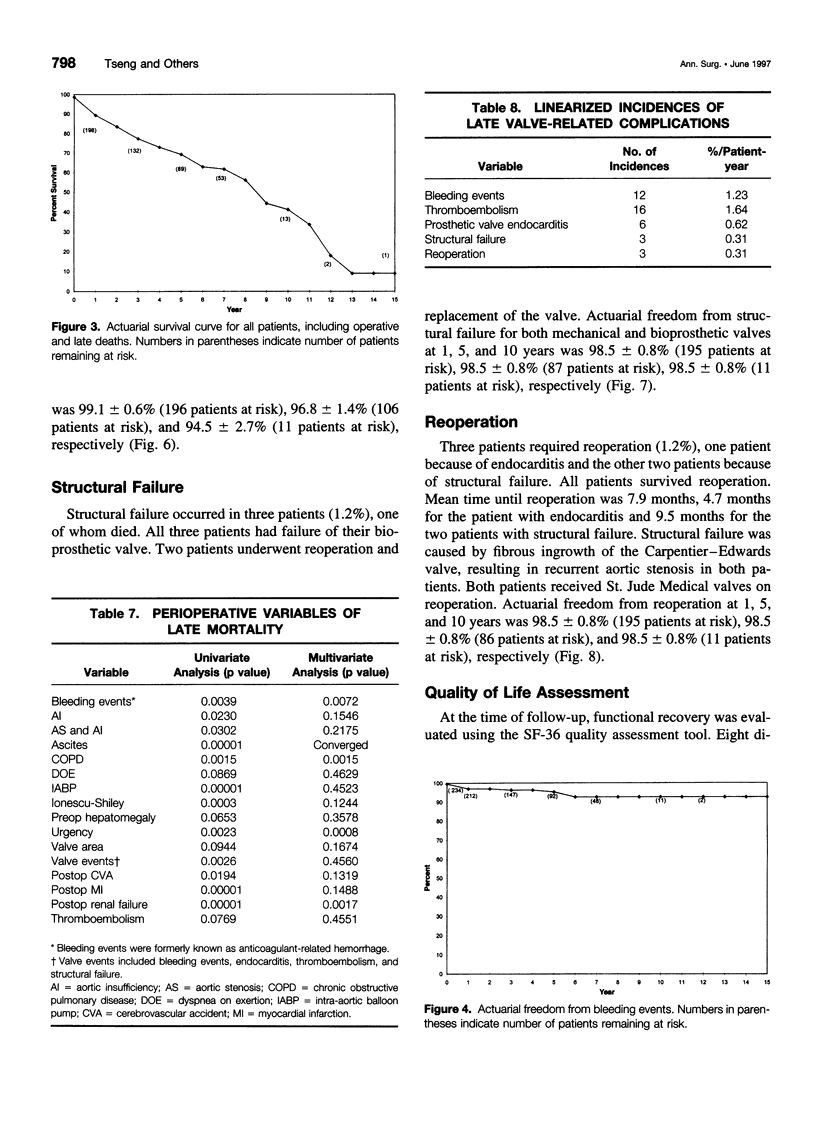
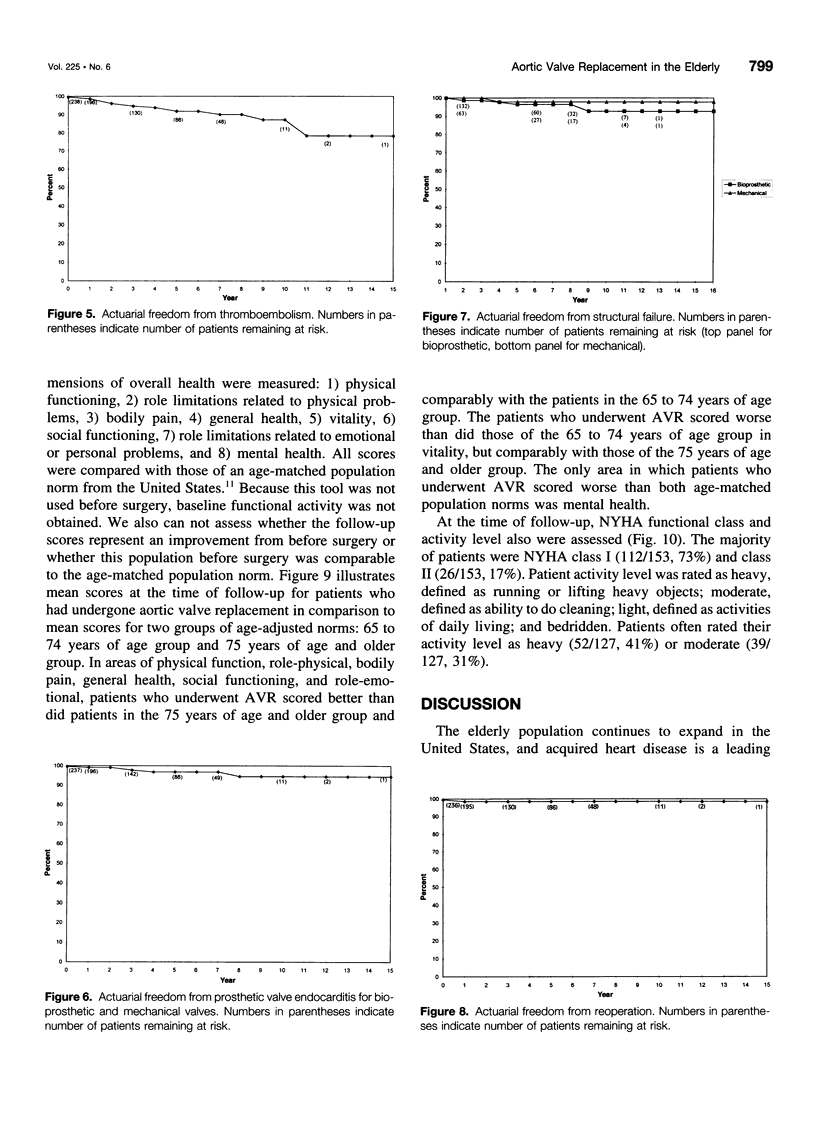
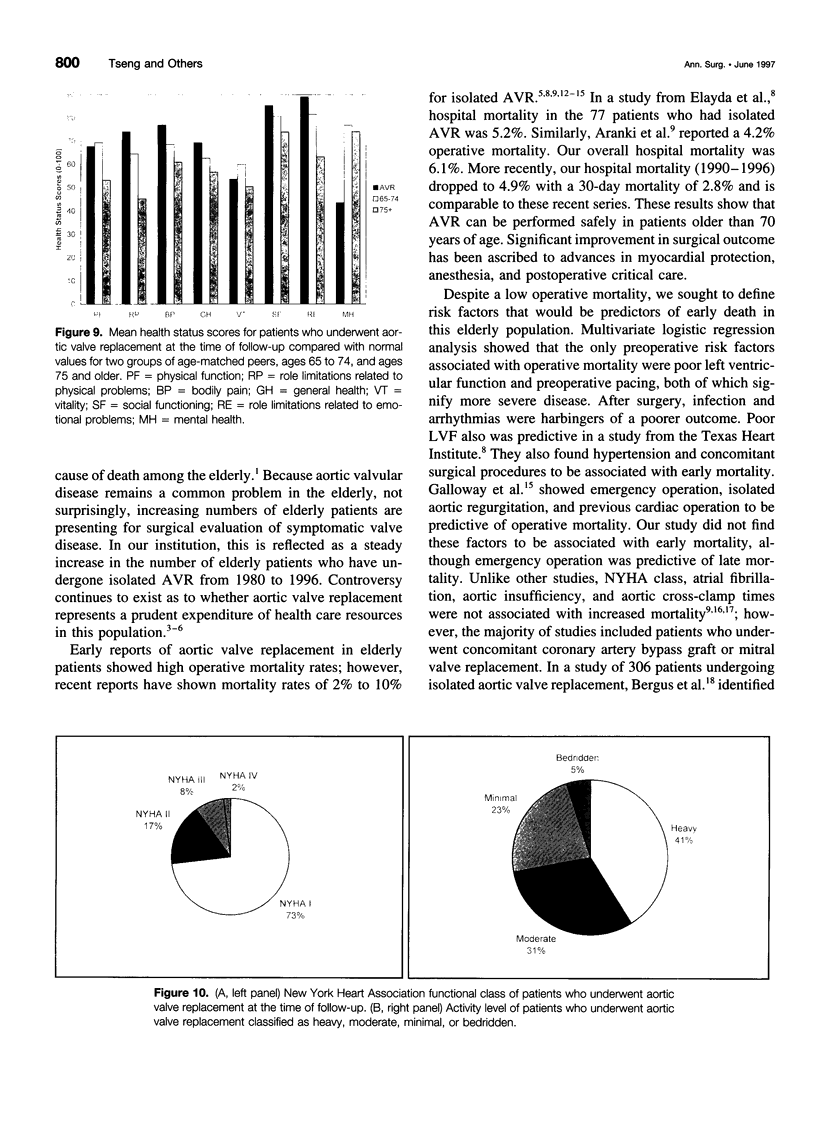
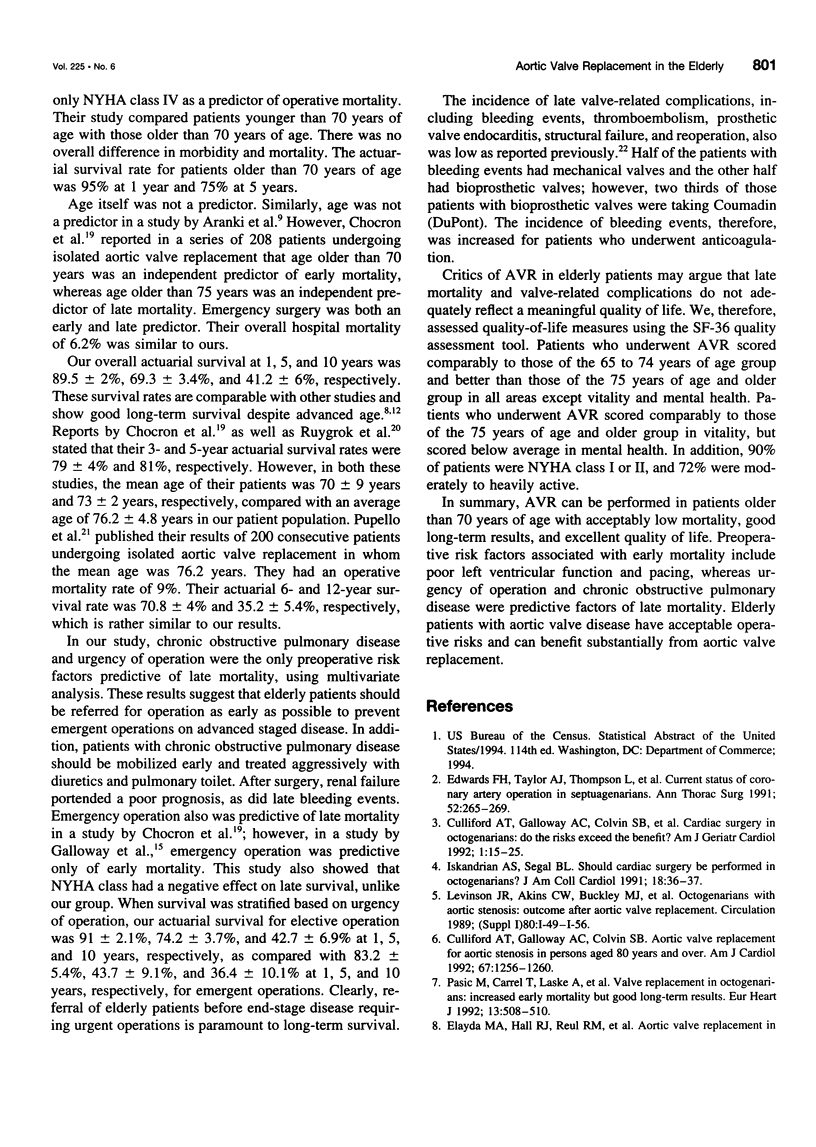
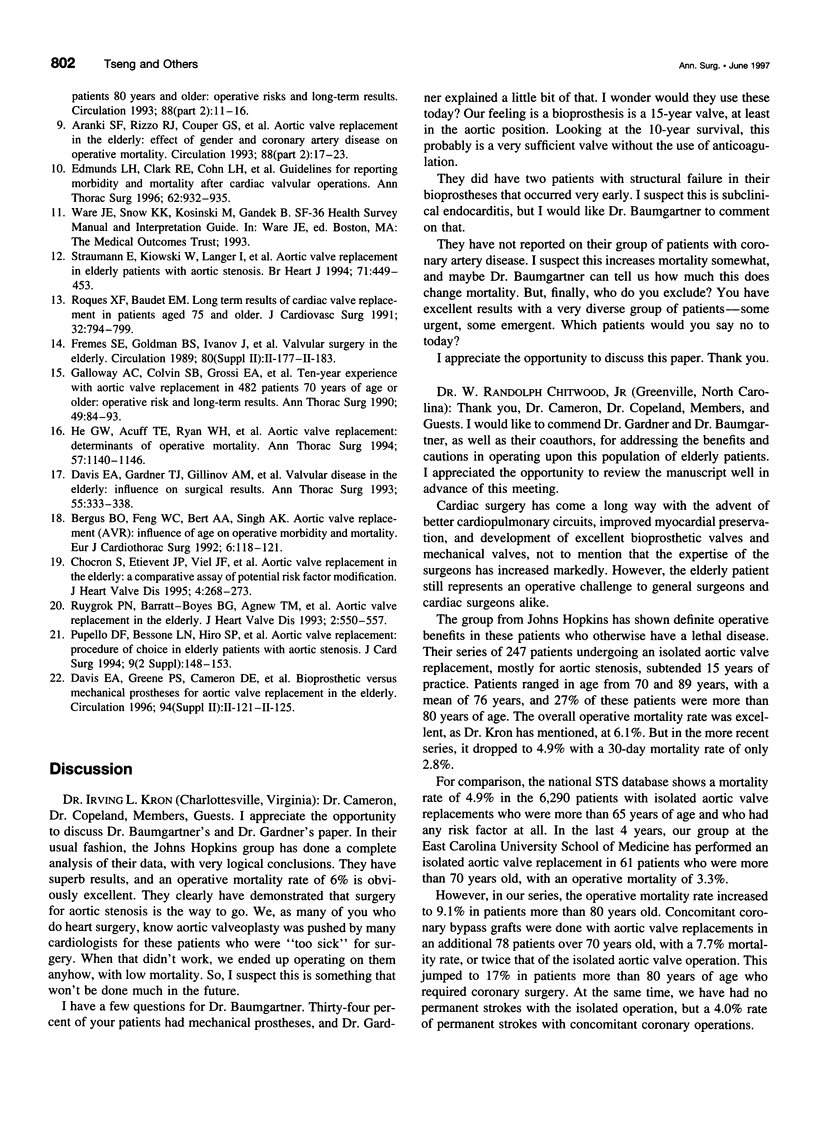
Images in this article
Selected References
These references are in PubMed. This may not be the complete list of references from this article.
- Bergus B. O., Feng W. C., Bert A. A., Singh A. K. Aortic valve replacement (AVR): influence of age on operative morbidity and mortality. Eur J Cardiothorac Surg. 1992;6(3):118–121. doi: 10.1016/1010-7940(92)90116-f. [DOI] [PubMed] [Google Scholar]
- Chocron S., Etievent J. P., Viel J. F., Meneveau N., Clement F., Schipman N., Taberlet C., Alwan K. Aortic valve replacement in the elderly: a comparative assay of potential risk factor modification. J Heart Valve Dis. 1995 May;4(3):268–273. [PubMed] [Google Scholar]
- Culliford A. T., Galloway A. C., Colvin S. B., Grossi E. A., Baumann F. G., Esposito R., Ribakove G. H., Spencer F. C. Aortic valve replacement for aortic stenosis in persons aged 80 years and over. Am J Cardiol. 1991 Jun 1;67(15):1256–1260. doi: 10.1016/0002-9149(91)90937-g. [DOI] [PubMed] [Google Scholar]
- Davis E. A., Gardner T. J., Gillinov A. M., Baumgartner W. A., Cameron D. E., Gott V. L., Stuart R. S., Watkins L., Jr, Reitz B. A. Valvular disease in the elderly: influence on surgical results. Ann Thorac Surg. 1993 Feb;55(2):333–338. doi: 10.1016/0003-4975(93)90993-r. [DOI] [PubMed] [Google Scholar]
- Edmunds L. H., Jr, Clark R. E., Cohn L. H., Grunkemeier G. L., Miller D. C., Weisel R. D. Guidelines for reporting morbidity and mortality after cardiac valvular operations. The American Association for Thoracic Surgery, Ad Hoc Liaison Committee for Standardizing Definitions of Prosthetic Heart Valve Morbidity. Ann Thorac Surg. 1996 Sep;62(3):932–935. doi: 10.1016/s0003-4975(96)00531-0. [DOI] [PubMed] [Google Scholar]
- Edwards F. H., Taylor A. J., Thompson L., Rogan K. M., Pezzella A. T., Burge J. R., Hetzler N. Current status of coronary artery operation in septuagenarians. Ann Thorac Surg. 1991 Aug;52(2):265–269. doi: 10.1016/0003-4975(91)91350-5. [DOI] [PubMed] [Google Scholar]
- Galloway A. C., Colvin S. B., Grossi E. A., Baumann F. G., Sabban Y. P., Esposito R., Ribakove G. H., Culliford A. T., Slater J. N., Glassman E. Ten-year experience with aortic valve replacement in 482 patients 70 years of age or older: operative risk and long-term results. Ann Thorac Surg. 1990 Jan;49(1):84–93. doi: 10.1016/0003-4975(90)90360-i. [DOI] [PubMed] [Google Scholar]
- Hall W. Dallas. The Systolic Hypertension in the Elderly Program: Implications for the Management of Older Hypertensive Patients. Am J Geriatr Cardiol. 1992 Jul;1(3):15–23. [PubMed] [Google Scholar]
- He G. W., Acuff T. E., Ryan W. H., Douthit M. B., Bowman R. T., He Y. H., Mack M. J. Aortic valve replacement: determinants of operative mortality. Ann Thorac Surg. 1994 May;57(5):1140–1146. doi: 10.1016/0003-4975(94)91344-7. [DOI] [PubMed] [Google Scholar]
- Iskandrian A. S., Segal B. L. Should cardiac surgery be performed in octogenarians? J Am Coll Cardiol. 1991 Jul;18(1):36–37. doi: 10.1016/s0735-1097(10)80213-x. [DOI] [PubMed] [Google Scholar]
- Pasic M., Carrel T., Laske A., Bauer E., Turina J., Jenni R., von Segesser L., Turina M. Valve replacement in octogenarians: increased early mortality but good long-term result. Eur Heart J. 1992 Apr;13(4):508–510. doi: 10.1093/oxfordjournals.eurheartj.a060205. [DOI] [PubMed] [Google Scholar]
- Pupello D. F., Bessone L. N., Hiro S. P., Lopez-Cuenca E., Glatterer M. S., Jr, Angell W. W., Ebra G. Aortic valve replacement: procedure of choice in elderly patients with aortic stenosis. J Card Surg. 1994 Mar;9(2 Suppl):148–153. doi: 10.1111/j.1540-8191.1994.tb00915.x. [DOI] [PubMed] [Google Scholar]
- Roques X. F., Baudet E. M. Long term results of cardiac valve replacement in patients aged 75 years and older. J Cardiovasc Surg (Torino) 1991 Nov-Dec;32(6):794–799. [PubMed] [Google Scholar]
- Ruygrok P. N., Barratt-Boyes B. G., Agnew T. M., Coverdale H. A., Kerr A. R., Whitlock R. M. Aortic valve replacement in the elderly. J Heart Valve Dis. 1993 Sep;2(5):550–557. [PubMed] [Google Scholar]
- Santoian E. D., Schneider J. E., Gravanis M. B., Foegh M., Tarazona N., Cipolla G. D., King S. B., 3rd Angiopeptin inhibits intimal hyperplasia after angioplasty in porcine coronary arteries. Circulation. 1993 Jul;88(1):11–14. doi: 10.1161/01.cir.88.1.11. [DOI] [PubMed] [Google Scholar]
- Straumann E., Kiowski W., Langer I., Grädel E., Stulz P., Burckhardt D., Pfisterer M., Burkart F. Aortic valve replacement in elderly patients with aortic stenosis. Br Heart J. 1994 May;71(5):449–453. doi: 10.1136/hrt.71.5.449. [DOI] [PMC free article] [PubMed] [Google Scholar]



